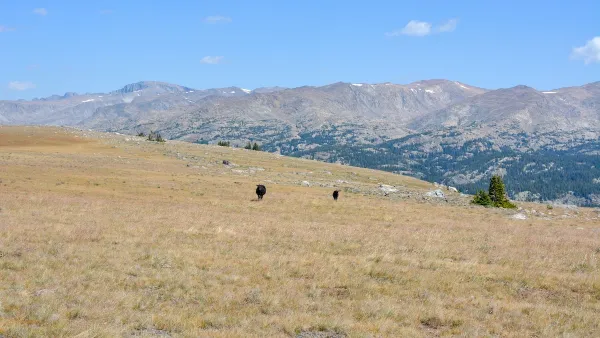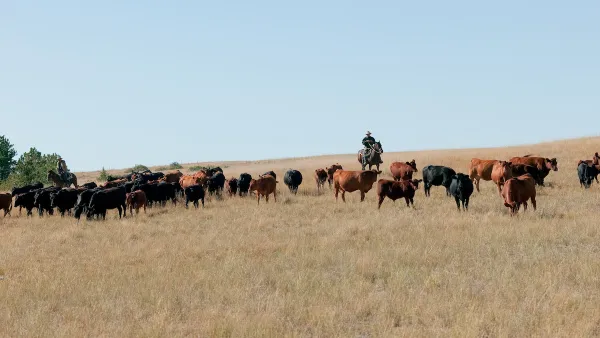In an news analysis for The New York Times Sunday Review, Alan Feuer sees the occupation of the Malheur National Wildlife Refuge in Harney County, Oregon as another struggle between the Wise Use movement, which began is the 1980s, and the mainstream.
"By storming the Malheur National Wildlife Refuge and vowing to return it — by force of arms, if necessary — to the people of Harney County, Mr. [Ammon] Bundy and his men were echoing the teachings, if not the tactics, of the Wise Use movement: a conservative land-use doctrine that has been a part of the national discourse for nearly 30 years," writes Alan Feuer, metropolitan reporter for The New York Times.
"The Wise Use Movement consists of more than a thousand local organizations across the country, representing roughly three million people—people who fear the infringement of their property rights, mostly by what they see as oppressive federal government regulations," write Jeffrey St. Clair and James Ridgeway for CounterPunch.
Feuer provides the background and historical perspective for the takeover of the refuge, operated by the U.S. Fish and Wildlife Service, rooted in the Wise Use movement.
Though composed of many activists and scores of organizations, Wise Use found its voice in the late 1980s when a timber industry adviser named Ron Arnold published “The Wise Use Agenda.” The manifesto offered an expansive plan to gut environmental regulation, increase private ownership of public land and compel the federal government to open its holdings to mining, oil and logging companies and to the unrestricted use of off-road vehicles.
Feuer warns readers from the onset not to dismiss rancher Ammon Bundy, son of Cliven Bundy who has yet to pay the Bureau of Land Management (BLM) the $1.2 million he owes in grazing fees, "as fanatics working at the fringes of American politics."
If you haven't been following the standoff near Burns, Oregon, The Times editorial board fills in the events of the last week:
Styling themselves as a militia, the group hijacked a peaceful protest over five-year prison sentences a federal court had imposed on two local ranchers for setting fires on federal land. Led by a man named Ammon Bundy — whose father, Cliven, instigated his own armed confrontation with federal authorities over cattle ranching in Nevada in 2014 — this hyperweaponized posse rolled into town and seized administrative buildings at the Malheur National Wildlife Refuge on Saturday [Jan. 2].
Jeffrey St. Clair and James Ridgeway write at length about those two ranchers, "Dwight Hammond [and his son Steven], now at the center of the armed seizure of the Malheur National Wildlife Refuge headquarters near Burns."
Feuer goes on to write about the intersection of the wise use and militia movements, interviewing, of all people, Jeffrey St. Clair, "a journalist who has written about environmental politics in the West for 30 years."
EcoWatch also provides a good accounting of the WiseUse nexus to the refuge takeover, as well as background on the refuge itself, "home to millions of migratory birds, established in 1908 by former President Theodore Roosevelt."
FULL STORY: The Ideological Roots of the Oregon Standoff

National Parks Layoffs Will Cause Communities to Lose Billions
Thousands of essential park workers were laid off this week, just before the busy spring break season.

Retro-silient?: America’s First “Eco-burb,” The Woodlands Turns 50
A master-planned community north of Houston offers lessons on green infrastructure and resilient design, but falls short of its founder’s lofty affordability and walkability goals.

Delivering for America Plan Will Downgrade Mail Service in at Least 49.5 Percent of Zip Codes
Republican and Democrat lawmakers criticize the plan for its disproportionate negative impact on rural communities.

Test News Post 1
This is a summary

Test News Headline 46
Test for the image on the front page.

Balancing Bombs and Butterflies: How the National Guard Protects a Rare Species
The National Guard at Fort Indiantown Gap uses GIS technology and land management strategies to balance military training with conservation efforts, ensuring the survival of the rare eastern regal fritillary butterfly.
Urban Design for Planners 1: Software Tools
This six-course series explores essential urban design concepts using open source software and equips planners with the tools they need to participate fully in the urban design process.
Planning for Universal Design
Learn the tools for implementing Universal Design in planning regulations.
EMC Planning Group, Inc.
Planetizen
Planetizen
Mpact (formerly Rail~Volution)
Great Falls Development Authority, Inc.
HUDs Office of Policy Development and Research
NYU Wagner Graduate School of Public Service





























